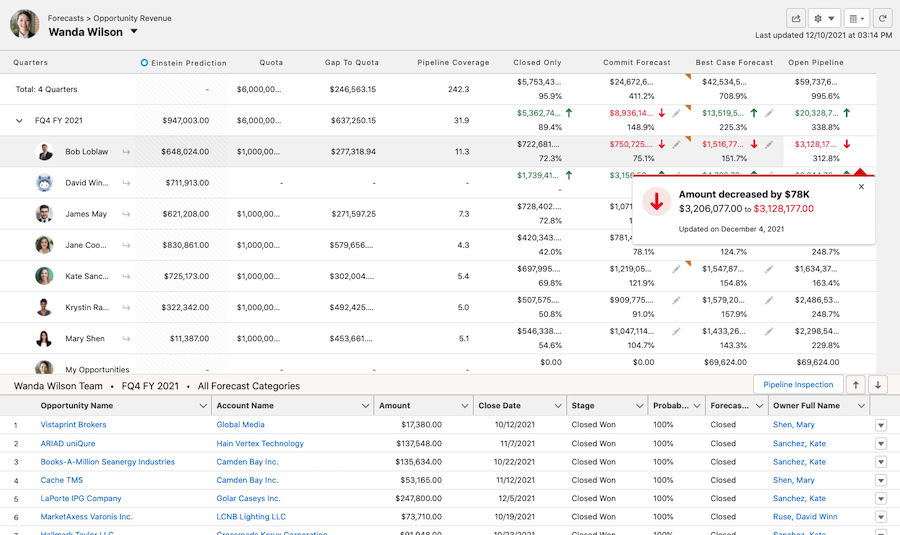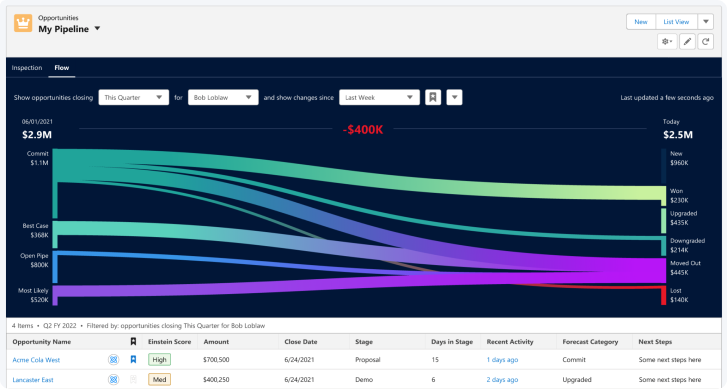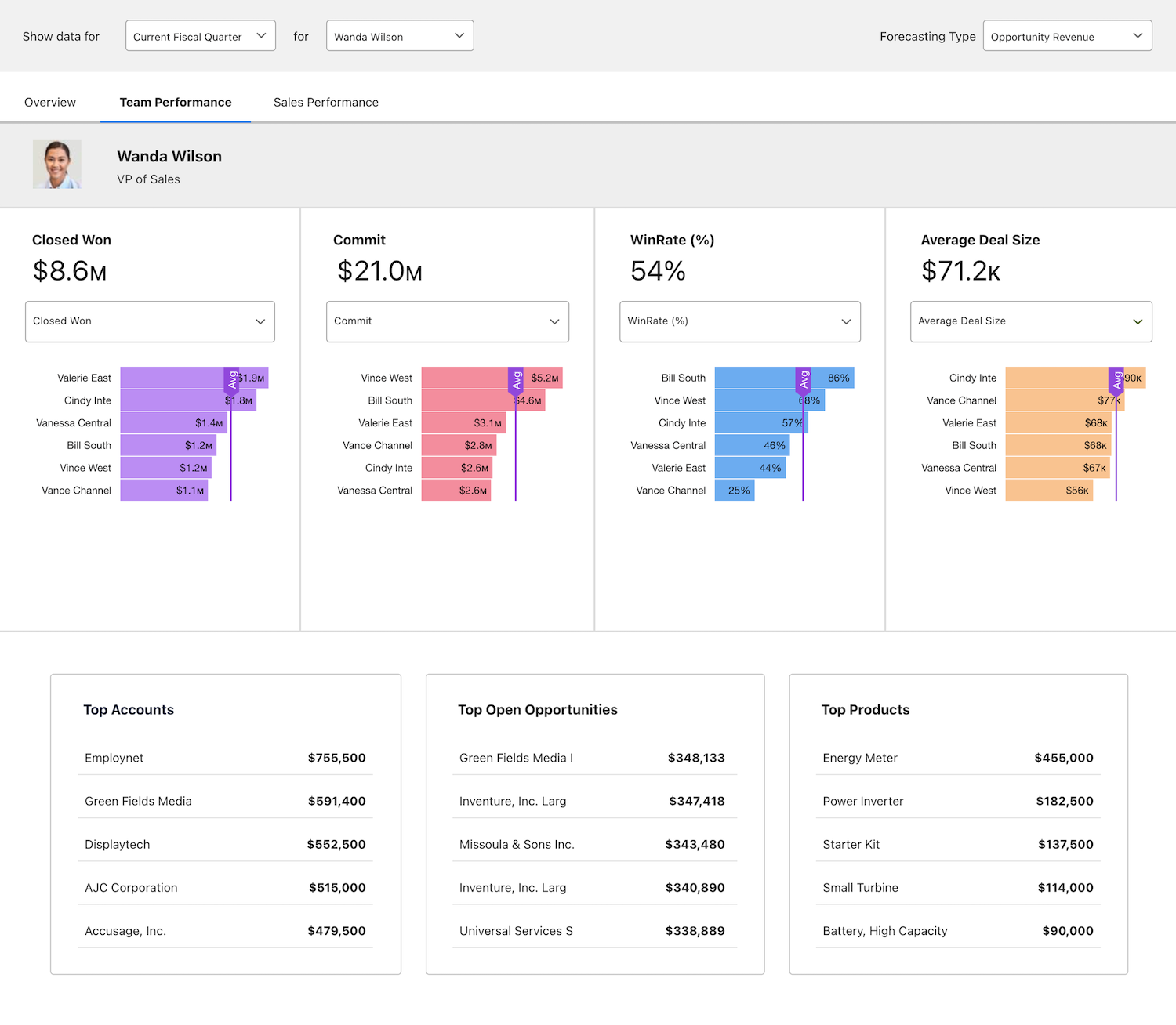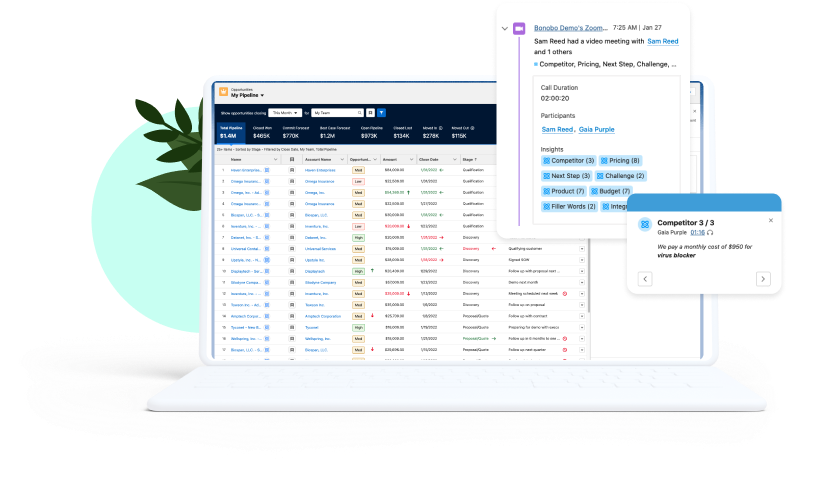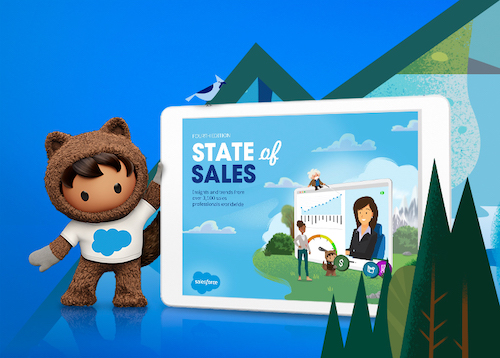Revenue intelligence is about admitting that human beings are great at selling but wince at the thought of analysing mountains of data. Sales will always be about people, but making the shift to data-driven sales and getting a granular understanding of your business can make a difference when managing your sales team's performance and driving your business for success.
Here are some important questions to consider:
How engaged is the sales team with our most important accounts?
How can they focus on the right deals and close them faster?
Do we have our strongest executives mapped to the most vital deals?
All these questions can be answered through revenue intelligence. It’s about working smarter, not harder. Let's cover the basics and explore some of the key benefits of revenue intelligence.
What is Revenue Intelligence?
In a nutshell 🥜, revenue intelligence is a data-driven way to manage sales and revenue performance through automated insights.
It collects your data using AI to create visibility across the revenue lifecycle. It generates actionable insights using revenue intelligence, enabling sales leaders to understand pipeline health, next best steps and drive predictable revenue growth.
What are the benefits of revenue intelligence?
If there’s one thing that all benefits point toward, it’s revenue growth. Here are the most important ones:
Adapt and quickly identify new opportunities: Improve deal health with data insights to grow pipeline, uncover winning trends across reps, territories, and customers to drive results at scale.
Forecast with accuracy: Improve forecast accuracy, trust that deals are in the right stages, and take action. Teams can profit from reduced risk and ensure that deals progress through the correct stages.
Empower your teams: Drive productivity through real-time tracking and regular individual assessments. Show new sales reps where to begin and guide them to make sound business decisions that will help convert deals. Although we’re talking about AI-powered software, we’re also considering something more impactful: improving the work lives of your people.
“Five of us used to spend hours talking about opportunities, understanding what was happening, and making decisions on how best to proceed. Now, we can get that level of understanding at a glance from our dashboards, and go into meetings prepared to take action and accelerate our goals.”
Having a simplified, one-stop-shop to access key sales metrics can be the difference in your sales team meeting their monthly target or not. Using AI to illustrate the health of every deal is almost like having a data scientist perched on your shoulder steering you through the data.
How can revenue intelligence software help your business?
Revenue intelligence is your escape route when you realise that intuition-based selling doesn't produce the results you need. Oftentimes, salespeople lead with their gut to close a deal and forecast based on how they feel. Revenue intelligence has completely flipped the script and now you can rely on the data and focus on what really matters: closing deals.
Here’s a preview of how it works in Salesforce:
Forecasting Intelligence
Now, you’re a sales manager prepping for your monthly call and you need to get an overview of the health of your business. Look no further. With forecasting, you are able to explore the data you need and uncover the latest revenue trends, and provide actionable, contextual insights into performance metrics so they can maximise results.
This snapshot shows the pipeline stages automatically integrating into the forecast, with visualisations illustrating which reps have updated forecasts. This gives sales leaders an indication of who is trending ahead or behind in their monthly targets.
“Ensuring the window into the business is clean is incredibly important. This means having complete confidence in the data I can see, to ensure not only accuracy in the number I am reporting but also consistent predictability of the business. ”
Pipeline Management and Analytics
Having clear visibility of your pipeline can make all the difference when monitoring deals and making improvements where necessary. Is a sales rep having a bad month? Through a consolidated up-to-date view, pipeline management enables sales leaders to identify which deals are healthy and which deals need more attention.
Through an interactive dashboard, you can find the answers you need, quickly. The chart above portrays the health of current deals and which deals have slipped through the net or have been completely lost.
“Second only to closed revenue, your pipeline is probably the single most important metric that will directly impact your performance. Whether you don’t have enough or what you do have is of poor quality, using data to help analyse this will directly impact what your next action needs to be in order to address it quickly.”
Adapting Sales Strategies with Data
Sales leaders need to stay on top of their business, scale their strategies with data and not spend their days chasing sales data. They need to analyse team performance through built-in dashboards and track sales closing KPIs such as win rates, deal sizes, and new business opportunities.
With a completely centralised view, leaders can easily understand which segments are performing well. This helps them replicate success and unite revenue-generating teams around the customer via connected data from any source.

